46 defense
This is spring ball. There are guys on the field who are never going to play, there are guys on the field who are going to play who not playing very well, and the coaches, whom I haven't spoken to, are not going to show the really juicy stuff in a public scrimmage. Therefore all of this is written in very light sand.
But I think…I think I saw a cool variation of a thing that's all over Don Brown's 2013 playbook, and if you'll bear with me and a lot of asterisks we might learn a thing about how Michigan's personnel fits the stuff we've been talking about in the Dude Glossary.
So late in the spring game the Blue team ran a backside power play and got stuffed. Some of that was good play by the defense, some of that bad play by the offense. But the play design itself appeared to illustrate an example of a "Bear"-like* defense they can get into any time they're in 3rd and short or near the goal line, and then change up at the line based on what the offense shows.
* [It's not a real Bear because the backside DE is not in a 3-tech. Speaking of the Bear, JeepinBen wrote a thing on Buddy Ryan's 46 Defense when it appeared in Hoke/Mattison's first year if you want a refresher on that)]
--------------------------
THE PERSONNEL: BUTKUS, TECHNICALLY
"Butkus" is the one I described where they trade some middle meat on the line for extra upfield rush. BC would usually use this formation for a 46 Bear defense. I mentioned at the time that Michigan's NTs work just fine as the gap-attacking meatheads the Bear likes, and here Maurice Hurst is indeed the tackle. The "Butkus"—a hybrid specialty position that's meant to be a DE/OLB (Jake Ryan-esque player), is Alex Kaminski, who is 5'10/215 (the standup guy hanging off the edge at the top of the line above).
As for the rest, the End (E) is Chase Winovich, the Will (W) is Mike McCray, the Mike (M) is walk-on Cheyenn Robertson, the free safety (F) is Dymonte, the Anchor (A) is walk-on Garret Miller, the Rover (R) is Tyree Kinnel, and the Sam (S) is Lawrence Marshall.
If you said "huh?" at the last bit, yeah Marshall is a defensive end. In this formation that's not so important since he, like the Butkus, is in there primarily to be an edge-rusher/-setter. Forget that "Sam" is a "linebacker" and instead think about Will Gholston lining up outside tight ends and getting unblocked sacks.
Also remember Peppers is going to be somewhere on that map this year, and it's my guess from the way Brown set this up that the somewhere will be Butkus, i.e. the place they've got Alex Kaminski.
Anyway if you're counting that's really four DL who are the same as the white team's base DL, three linebackers who were the base linebackers, and the same four defensive backs. In other words Brown didn't take his 4-3 personnel off the field. He did, however, put them in places that emphasized different skills. I bet that will be a regular feature of this year's defense.
[After the jump: how they attack (I think) and how it works (I'm pretty sure)]
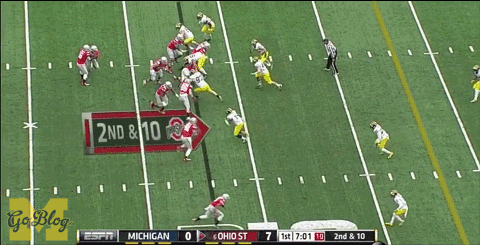
This was boss by James Ross. Read on to find out why it was pretty cool of Mattison too.
In football everything old tends to become new again. In last week's article on the Saban pattern-matching defense I alluded to how Alabama tried to use the same strategy Virginia Tech had against Ohio State, and got "85 Yards Through the Heart of the Southland" in their face. However Michigan had some success last year defending this same stuff from a base alignment. So I thought I'd explain how.
Tech refresher
A quick refresher on what "3T" and "2i" etc. mean: A "technique" is the place a defensive lineman lines up relative to the offensive linemen:
When we say Willie Henry is a perfect 3-tech, it means he's good at doing things that you would do if you're usually lining up on the guard's outside shoulder.
They are numbered more or less from the inside out, but it gets confusing from having amalgamated many different coaches' terms for where a defender's hat starts. Like how a baseball diamond can comfortably accommodate all four sexual acts you knew of in 3rd grade, but once you're deep into high school extending the analogy leads to a lot of weirdness and disagreement.
Notice that there aren't names for lining up directly in a gap; you want your lineman to be "covering" (lined up in front of) someone to some goodly degree because in any scheme delaying an offensive lineman from getting downfield is a win for the defense. This will be important in a bit, but first let's talk about what OSU does.
Meyer's Base
By now I figure you know what the zone read looks like. Meyer does zone—and did so a lot more with zone guy Tom Herman at the helm than the heavy power stuff he ran at Florida—but at his heart he's still a Manballer. He manballs with the read-option…
…and he Manballs with regular old Power O from his spread sets. Here's what that looks like:
This was the same running game they used to pound defenses to death with Carlos Hyde, using the constant threat of Braxton Miller loping around the backside if you attacked that by crashing the middle, and dangerous vertical threats running downfield if you activate your safeties against it.
If Brian had UFR'd this I imagine he'd ding Glasgow –2 for getting blown five yards downfield by the double (and the refs for Mone getting held but that rarely gets called). Bolden had to watch for a backside cut but his path to the ball was blocked by Glasgow. The hold meant Mone couldn't fight off his block to stop the puller from getting into the lane, and Ryan can only pop that guy to restrict the hole.
But back up; why did such a good running offense need a hold and a good NT getting blown off the ball to gain its yards? Michigan made this hard by having two defensive tackles lined up over the guards. If Mone and Glasgow could hold their ground, Ryan and Bolden have a chance to stop this for a minimal gain. Two plays later they would, and it goes back to what Virginia Tech is doing with the old Bear.
[After the jump]
left: Bryan Fuller
Earlier this offseason I stumbled onto an old article where Bill Walsh wrote what qualities he looks for when drafting various positions. Meant to be a one-off on the offense, I took requests for a defensive version and broke it up into D-Line, linebackers, and now, finally, the defensive backs. The idea is since the coaching staff is building a "pro-style" team with principles more akin to the Walsh ideal that dominates the pros than the collegiate evaluations made on scouting sites and the like, we shall re-scout the 2013 roster for Walsh-approved attributes.
Since coverages have changed the most since Walsh's day—a reaction to the spread—this is probably the least valuable of the series. To bring it back on point, I've gone off the page a little bit to note some of the attributes that NFL defensive coaches are looking for nowadays, and what those changes mean.
Strong Safety
Plankamalu / Shazorvacs/ M-Rob if all quarterbacks were Brian Cleary
Walsh Says: 6'3/215. Now hold your horses before going all "SHAZOR?!?" on me—I'm making a point: The type of player you have at safety depends on the type of system you want to run and the type of player you have everywhere else. If you're going to be playing more odd coverages (cover 1, cover 3) then you want your strong safety to be more of a run support guy, in many ways a fourth linebacker. If your base coverage is even (cover 2, cover 4) the strong and weak safeties will be more similar:
"There are other systems of defense where both safeties play a two-deep coverage and only occasionally come out of the middle to support the run. They basically play the ball in the air, the middle of the field and the sidelines. When you do that, then the stress is on the cornerback to be the support man.
So you must keep in mind these various philosophies when considering what types of cornerbacks and safeties you want to put together in forming a defensive secondary."
The attributes of your defensive backs should be complementary. Here's what Walsh is getting at: your backfield has to be able to defend the pass first and the run second. And here's the key: the more you can trust one player to handle coverage without help, 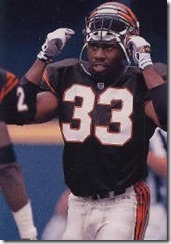 the more you can stock up on extra run defense with the other guys. If your backfield already has plenty of coverage, you can have a strong man:
the more you can stock up on extra run defense with the other guys. If your backfield already has plenty of coverage, you can have a strong man:
"The strong safety is historically the support man. He must have some of the traits you look for in a linebacker. In fact there have been some hybrid players in that position. Cincinnati had David Fulcher [right], who was as big as some linebackers but could function also as a safety. The Bengals moved him weak and strong, inside and outside and he became that extra man that the offensive run game had to account for but often could not block.
…
"But the typical strong safety is someone who can hit and stop people and respond spontaneously and go to the ball. Naturally, the more coverage talent the man has the more you can line him up on anybody."
Today, defensive coordinators sit on porches, remember when you could play a guy like Fulcher, and say "those were the days." The epitome of this type of safety is former Buckeye Doug Plank, who defined his position to such a degree that the defensive system itself was named for his number (46).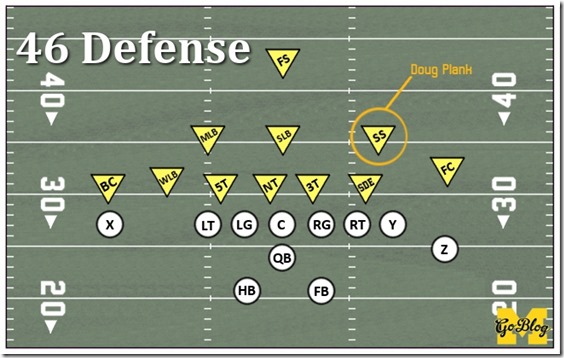
It's also called the "Bear" defense because it was the Bears
This defense was at the height of its popularity when Walsh joined the 49ers in 1979, and it was this defense his model passing concepts shredded. The defense played to Plank's strengths as an overly aggressive, hard-hitting run stopper with some coverage skills. The SAM linebacker in today's anti-spread sets (e.g. the 3-3-5's "Spur") is a closer analogue to the Plank-style player than the modern strong safety, with the key difference being that, as a safety, you couldn't put a blocker on a 46 without removing one from a lineman or linebacker, meaning the SS could flow cleanly to the point of attack and wrack up ridiculous tackle numbers.
College teams loved this, since passing quarterbacks were hard to come by and the big boys were running three yards and a cloud of dust (and later the option). A lot of cool names for linebacker-safeties were passed down from this period, such as the "Wolf" on Bo's teams, or the "Star" (names which today are coming out of retirement for the nickel-SAM hybrid position in base 4-2-5 anti-spread defenses).
Walsh's Favorite Wolverine: Why does a mid-'70s response to off-tackle NFL running games matter to a collegiate defense in 2013? Well because we have a really good free safety, and play tight end-heavy outfits this year in UConn (T.J. Weist, a rare member of the Gary Moeller coaching tree, is taking over there), Penn State, Michigan State, and Iowa, with the outside possibility of a Wisconsin if we make it to the conference championship. Also because the coaches have been subtly putting safety-like objects (Woolfolk, Gordon, and now Dymonte Thomas) at nickel, and recruiting a few linebacker-sized safeties.
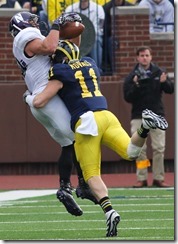 I don't know what he'd think of Kovacs. We loved him, but Jordan had two weaknesses: 1) his lack of overall athleticism made exploitable if left in wide coverage (see: his abusing by Ace Sanders on the last play of the Outback Bowl, and the utter disaster that was GERG's attempt to play Kovacs as the free safety in 2009), and 2) his lack of size made him blockable if a lead blocker could get to him (see: bad things happening whenever Mouton abandoned contain).
I don't know what he'd think of Kovacs. We loved him, but Jordan had two weaknesses: 1) his lack of overall athleticism made exploitable if left in wide coverage (see: his abusing by Ace Sanders on the last play of the Outback Bowl, and the utter disaster that was GERG's attempt to play Kovacs as the free safety in 2009), and 2) his lack of size made him blockable if a lead blocker could get to him (see: bad things happening whenever Mouton abandoned contain).
He would have loved Ernest Shazor, a knife blade listed at 6'4/226 with a scatback's acceleration who loved nothing better than demonstrating the force equation. Brian calls Shazor "the most overrated Michigan player of the decade" because he has to live with the bolded subconscious of UFR, and nothing pisses off a figment of a blogger's imagination like a safety who gives up a big play in coverage.
Here's the point: the ideal safety would be a dude with the size and stopping power to pop a lead blocker and make the tackle or lay out a guy like Shazor, read and react like Kovacs, and cover like Charles Woodson. That human doesn't exist. A combo of epic athleticism with plus headiness and serviceable tackling and size equals Ed Reed or Sean Taylor. Epic headiness with plus size and serviceable everything else nets you Doug Plank, with plus athleticism: Ronnie Lott, Troy Polamalu or Rodney Harrison. The trick is to have epic everything between your safeties; for strongside then it's not Ernest Shazor or Jordan Kovacs; it's SHAZORVACS!
What to look for in a Scouting Report: At either safety position, instincts rate highly and speed after that (less so for the strongside). You're looking to first make sure you have enough coverage in the entire backfield, and once you do you can use this position to stock up on linebacker traits: tackling, size, taking on blockers, personal contribution to local seismic activity, that sort of stuff.
What you can learn on film: Everyone loves those bone-jarring hits and coaches are more than happy to put them in a recruiting video, but not all hits are created equal. Sometimes they're generated by another defender cutting off the lead blocker, other times it's your guy reading the play so early he can go all-out on the hit. More important is what happens to the ballcarrier: he needs to go down. Safeties are going to be left in space, and making that tackle is more important than making the offensive player wish he'd never met this oblong brown thing.
What could signal bust potential: Remember you want a safety, not a horse, i.e. overrating the secondary, linebacker-y attributes and expecting the rest to come along. Adequate coverage and good instincts need to be there or else this guy is just a platoon player. "May be a linebacker on the next level" is a red flag, unless he actually becomes a linebacker. Brandon Smith's recruiting profile is instructive.
It's usually good policy to discount ESPN's opinion when it's in wild disagreement with the other services, but here I tend to give their rip job ($, "he's not a fast-twitch athlete and lacks explosive quickness and speed"; "Takes too long to reach top speed"; "He can be late, takes false steps and doesn't see things happen quickly enough") some credence. Reasons:
- Rivals started off very high on him, ranking him around #50, but steadily dropped him as the year progressed despite his status as a high-profile uncommitted player.
- Despite all the guru accolades Michigan's main competitors were Rutgers and South Carolina; other offers came from Maryland, NC State, Wisconsin and West Virginia. He wanted offers from Florida and Ohio State which never came.
- You always risk looking like a tool when you rely on your super awesome scouting skills and six plays on youtube to discern a kid's fate, but... yeah, I didn't think he was all that.
The guy left in a huff after they tried to wring the last bit of value out of him as a Doug Plank-like extra linebacker vs. Wisconsin, and Wisconsin ground us to dust, but then Smith was a high school quarterback whose development as a defender had to come almost entirely from the Rodriguez-era coaching staff. Anyway you've seen this again and again: rave reviews for the guy's "frame" and a profundity of attributes that would make him seem a really nice horse, combined with not nearly enough "makes plays." First have all of the safety stuff: can read and react, cover, and tackle in space. Then care about the size.
How our guys compare: Jarrod Wilson (6'2/196) remains my favorite to start at this spot because he is adequate (not yet plus) in coverage and the other guys aren't. Like the Jamar Adams he reminds me of, Wilson doesn't stand out in any category but doesn't have any major holes in his game other than being young.
The other leading candidate is Marvin Robinson who scares the hell out of me. He was a big-time recruit early in the process thanks to apparently having an early growth spurt, and his profile was filled with horsey metaphors. The same player still hangs on that frame (he arrived at 203 and never deviated more than 3 lbs from that) and hopes for him hang on the comparative competence in coaching plus the fact that being behind Jordan Kovacs is a perfectly reasonable excuse for not seeing the field earlier.
The redshirt freshmen at this position are stiff and linebacker-ish with instincts, more Plank than Polamalu. Jeremy Clark is all of 6'4/201 and did an okay job against the run in the Spring Game I covered in this space a few weeks ago, but lacks speed. Allen Gant also had instincts praised as a recruit, but also lacks the kind of athleticism and would at best develop into a slightly bigger and less heady Kovacs. If going forward Michigan can develop a superstar at the other safety spot or with a corner, they might be able to Plank it with one of these guys—when Woodson gave us that opportunity in '97, Daydrion Taylor and Tommy Hendricks went ham.
Thomas Gordon is super-instinctive and would be a perfect fit here except he's needed at the more important free position he's been playing.
[The rest, after the leap.]




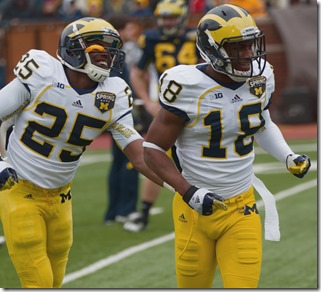
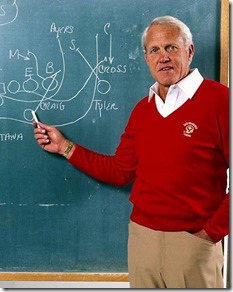
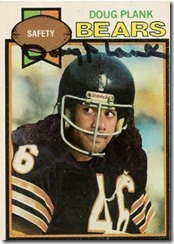
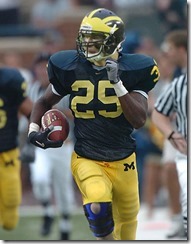
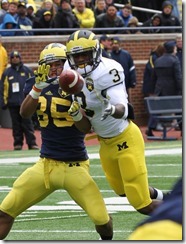
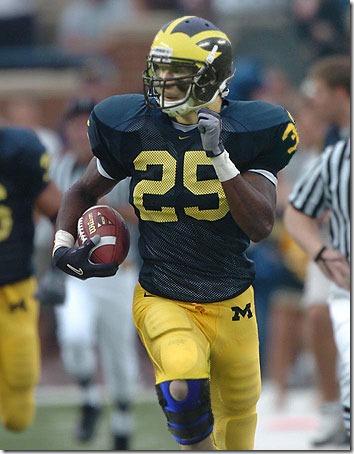
17